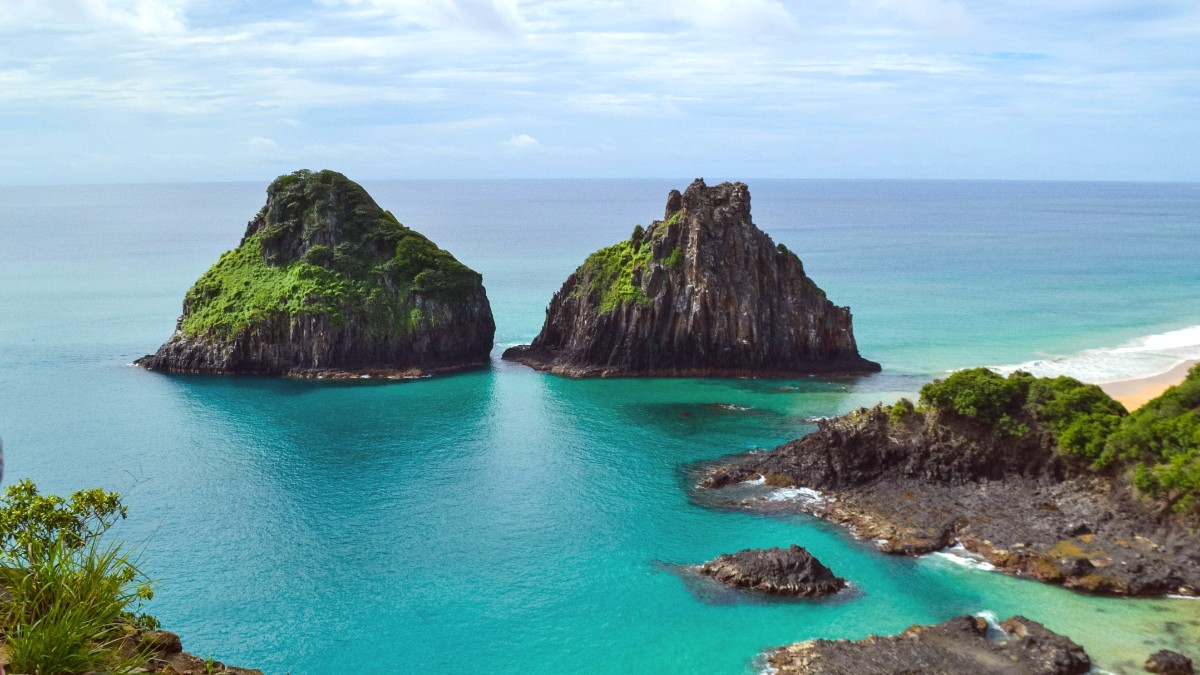
Brazil
The island's highlight is fresh seafood. This includes various types of fish like tuna, wahoo, mackerel, snapper, and barracuda. Shrimp and lobster are also common. Tropical fruits like mango, passion fruit, and cashew appear frequently in dishes and beverages.
Root vegetables, especially manioc (cassava), serve as staple ingredients, often prepared as flour or a creamy side dish. Coconut milk frequently joins stews and sauces, lending a rich, tropical flavor.
The island's cuisine is generally simpler compared to the diverse regional cuisines of mainland Brazil. It emphasizes the freshness and quality of its seafood.
While you find influences from across Brazil, the island's unique circumstances foster a focus on local catches prepared with traditional Northeastern techniques.
Dishes often include fresh herbs, garlic, and citrus to brighten the natural flavors of the seafood.
A popular dish featuring fresh fish baked in a traditional clay tile. It often includes vegetables and a rich, creamy coconut-based sauce. The tile cooking method helps retain moisture and flavor.
A delightful local specialty.
A classic Brazilian seafood stew. Prepared with either fish or shrimp, this dish combines coconut milk, peppers, onions, and sometimes a touch of dendê oil. Served hot, often with rice and pirão.
A must-taste for seafood enthusiasts.
Delicious fried fish cakes. These savory, crispy snacks are a common and popular appetizer or light bite.
Perfect for a casual snack.
Seared tuna, often prepared simply to highlight the exceptional freshness and quality of the local tuna. Usually comes lightly seared on the outside and rare inside.
A creamy, thick side dish from fish broth mixed with manioc flour. It commonly joins fish stews and provides a hearty complement.
Restaurante do Zé Maria is famous for its "Festival Gastronômico" nights, typically held twice a week. This event features an elaborate seafood buffet and often includes live music. Reservations are necessary. Mesa da Ana provides innovative dishes and an intimate ambiance.
Many pousadas have excellent in-house restaurants open to non-guests, providing convenient and quality dining. Varanda is a popular choice for its varied seafood menu and pleasant atmosphere. Pousada Maravilha Restaurant features high-quality cuisine with stunning ocean views.
Look for smaller, local eateries, often called "restaurante caseiro" (homemade restaurant) or places offering a "Prato Feito" (PF). These fixed-price meals typically include rice, beans, a protein, and a side salad, creating affordable options.
International cuisine on the island is limited. A few establishments might serve Italian or general international dishes, but the focus stays strongly on local Brazilian and seafood.
Do not expect a wide array of global flavors.
The island's dining experience emphasizes fresh, local ingredients and a relaxed ambiance over diverse international menus.
Embrace the local flavors for the best culinary journey.
Possible with communication.
Portuguese phrases aid clarity.
Can be limited; communicate clearly.
Halal/Kosher extremely rare.
Awareness of specific allergens like gluten may be limited. Communicate allergies clearly. Focus on naturally gluten-free items like rice, beans, fresh fish, and vegetables.
Prioritize fresh, simple preparations to minimize risk.
When in doubt, choose simple, unprocessed foods. Always double-check ingredients, as cross-contamination can occur.
Careful choices enhance your dining peace of mind.
Many side dishes feature cooked vegetables, like sautéed greens or pumpkin puree. Confirm no meat broths.
Most restaurants are small and locally run, they usually accommodate simple requests to omit ingredients.
Formal cooking classes or dedicated food tours are very limited or non-existent on the island. The focus leans more towards enjoying the prepared local dishes rather than participating in their creation.
Not applicable. The island's arid climate and protected status means very little local agriculture. Most produce arrives from the mainland.
Fernando de Noronha has no regularly scheduled food festivals that draw large crowds. Any special culinary events would likely be ad-hoc and organized by specific restaurants, especially during high season.
If staying in a pousada domiciliar, you might have the chance to share homemade meals with local families, bringing an authentic taste of island life.
A genuine cultural connection.
While limited, seeking out tapioca or espetinhos from local vendors provides quick, flavorful, and affordable snacks.
These street-side bites complement your island exploration.
The island's strength lies in its fresh seafood. Be open to trying different local preparations.
Sample the abundance of fresh, local tropical fruits, both as snacks and in juices.
Many restaurants offer prime spots for sunset views, pairing beautiful scenery with your meal.
Prices for food and drinks on Fernando de Noronha are generally higher than on mainland Brazil due to transport costs.